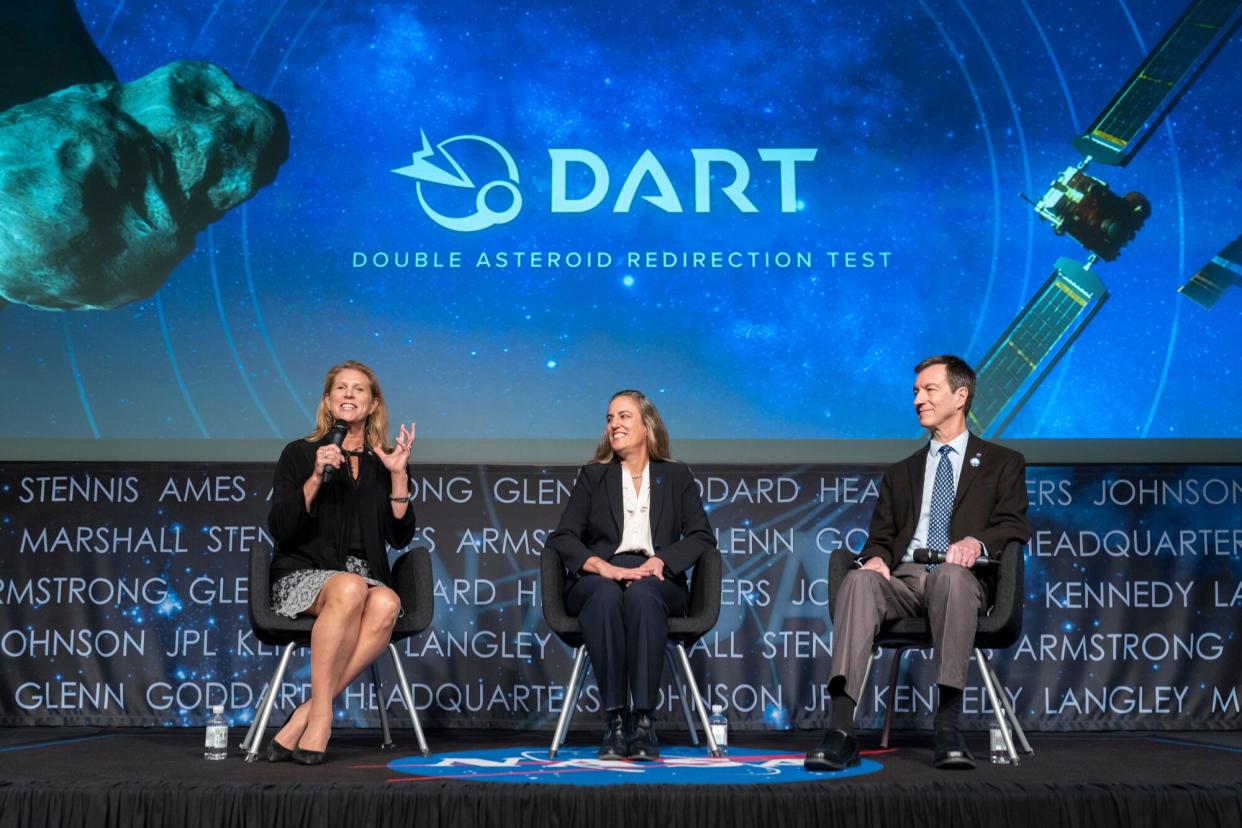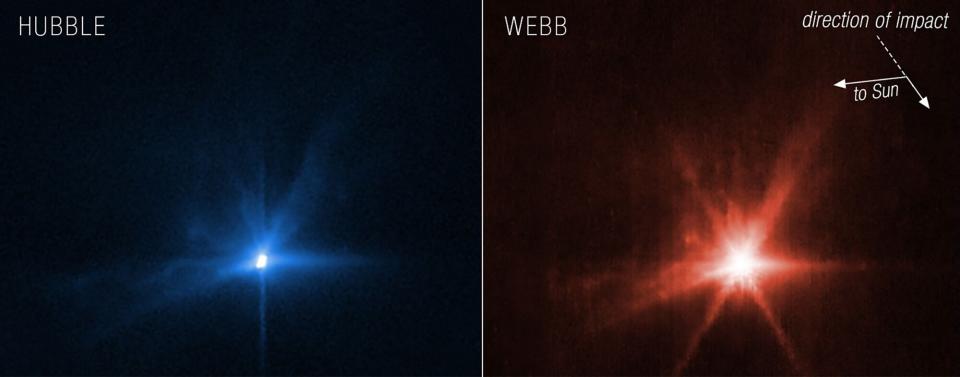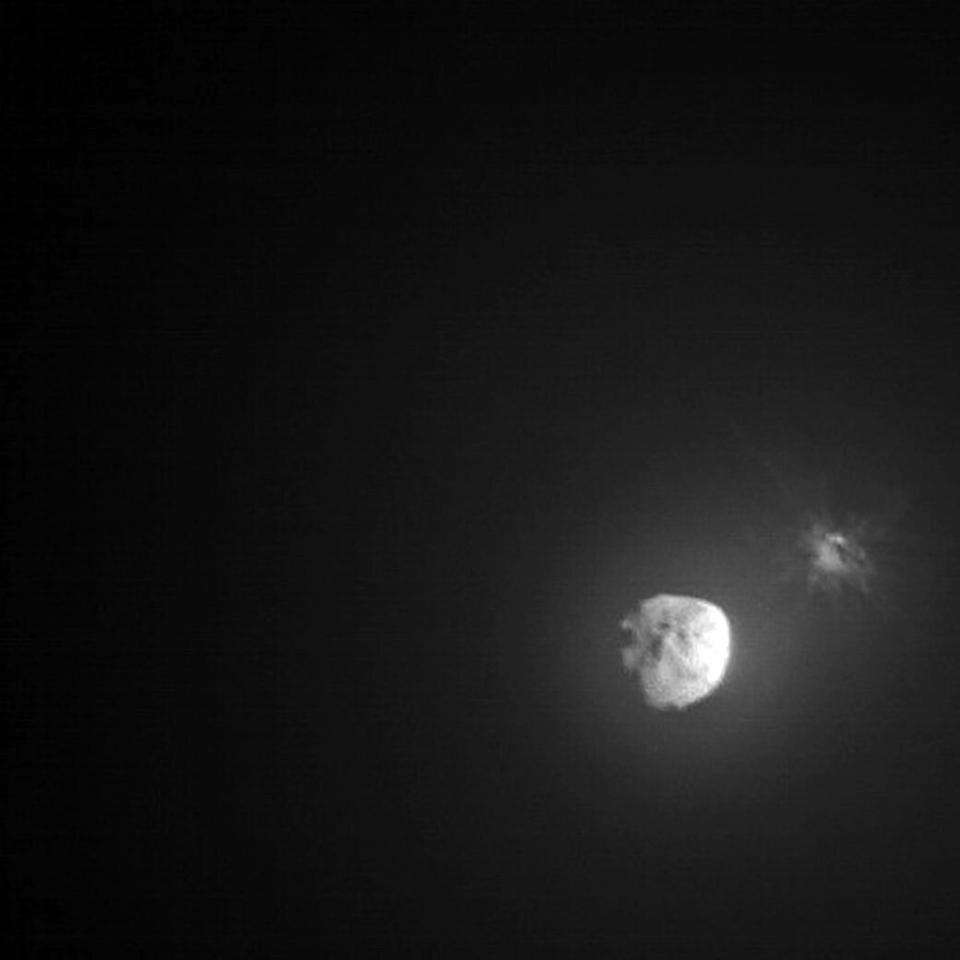Spacecraft Succeeds in Knocking Asteroid From Its Orbit, NASA Says: 'Defender of the Planet'

Alex Brandon/AP/Shutterstock
NASA has — for the first time in human history — altered the trajectory of an asteroid, the organization announced Tuesday.
NASA's Double Asteroid Redirection Test (DART) was launched in November of last year, but didn't have its first collision with a celestial body until Sept. 26, when it successfully knocked an asteroid out of its orbit in what NASA is calling "the first full-scale demonstration of asteroid deflection technology."
The purpose of DART was to determine if a spacecraft could divert the course of an asteroid in case of a future potential collision with Earth.
NASA targeted an asteroid that is not currently a threat to our planet, Dimorphos, which was bumped out of its orbit after the spacecraft made contact more than 7 million miles away.
"All of us have a responsibility to protect our home planet. After all, it's the only one we have," said NASA Administrator Bill Nelson in a release. "This mission shows that NASA is trying to be ready for whatever the universe throws at us. NASA has proven we are serious as a defender of the planet. This is a watershed moment for planetary defense and all of humanity, demonstrating commitment from NASA's exceptional team and partners from around the world."

STScI/HANDOUT/EPA-EFE/Shutterstock
The targeted asteroid previously spent 11 hours and 55 minutes orbiting its larger parent asteroid, Didymos. Since NASA sent DART to intentionally collide with Diomorphos, data has shown that the spacecraft's impact altered Dimorphos' orbit by 32 minutes. Before its encounter, NASA had projected a change of 73 seconds, but early data shows that DART surpassed that minimum by more than 25 times.
"This result is one important step toward understanding the full effect of DART's impact with its target asteroid," said Lori Glaze, director of NASA's Planetary Science Division at NASA, in the release. "As new data come in each day, astronomers will be able to better assess whether, and how, a mission like DART could be used in the future to help protect Earth from a collision with an asteroid if we ever discover one headed our way."
RELATED STORY: NASA Launches DART Mission to Collide with Asteroid: 'Turning Science Fiction into Science Fact'
The data has been acquired through ground-based observation using telescopes in Chile and South Africa. Further data has been collected from radar facilities at NASA Jet Propulsion Laboratory's Goldstone planetary radar in California and the National Science Foundation's Green Bank Observatory in West Virginia.
The spacecraft itself also had a camera on board, but the technology was destroyed upon impact. Now, images from the Light Italian CubeSat for Imaging of Asteroids (LICIACube) provided by the Italian Space Agency will help provide a better look at what's happening with Dimorphos.

Uncredited/AP/Shutterstock
NASA said they are still working to understand all the implications of the DART project, and will continue to investigate its potential uses. In approximately four years from now, the European Space Agency's Hera mission will do a fly-by and study the outcomes of the collision.
"DART has given us some fascinating data about both asteroid properties and the effectiveness of a kinetic impactor as a planetary defense technology," said Nancy Chabot, the DART coordination lead from the Johns Hopkins Applied Physics Laboratory (APL) in Laurel, Maryland. "The DART team is continuing to work on this rich dataset to fully understand this first planetary defense test of asteroid deflection."
Never miss a story — sign up for PEOPLE's free weekly newsletter to get the biggest news of the week delivered to your inbox every Friday.
DART is the "the world's first full-scale mission to test technology for defending Earth against potential asteroid or comet hazards." DART is built and managed by the Johns Hopkins Applied Physics Laboratory.
NASA launched DART on a SpaceX Falcon 9 rocket on Nov. 24, 2021, at 1:21 a.m. ET from Vandenberg Space Force Base in California.

